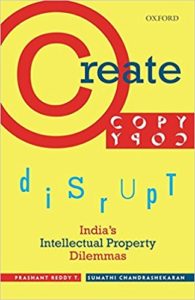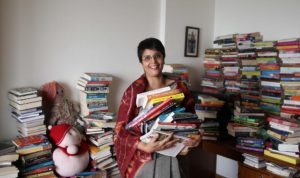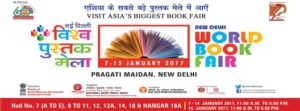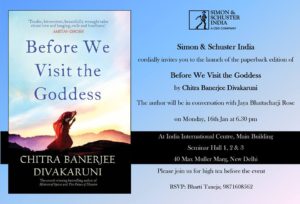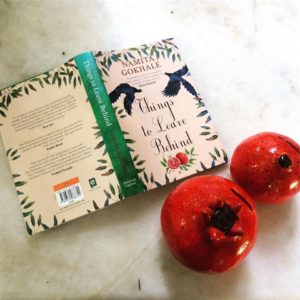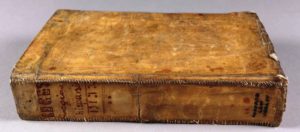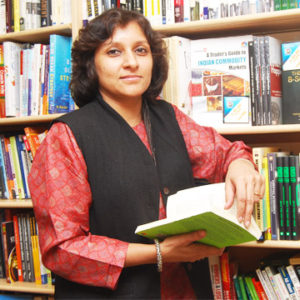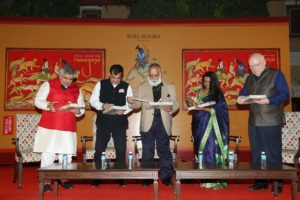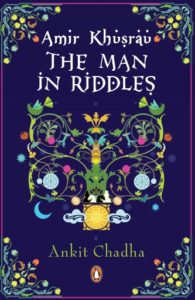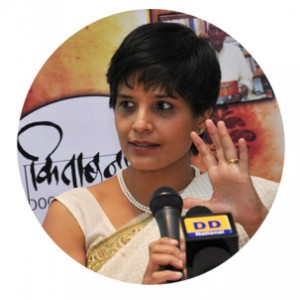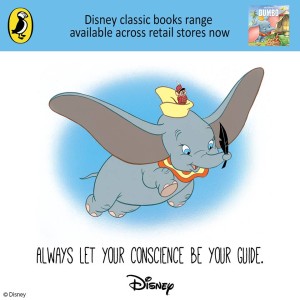
PENGUIN RANDOM HOUSE AND DISNEY INDIA BRING
DISNEY’S ICONIC STORIES AND CHARACTERS CLOSER TO INDIAN CHILDREN
 March 08, 2016, Delhi: Penguin Random House and Disney India’s Consumer Products
March 08, 2016, Delhi: Penguin Random House and Disney India’s Consumer Products  business today announced the launch of Disney books. Penguin Random House will now hold the rights in India for publishing Disney’s iconic Mickey & Friends characters as well as – Aladdin, Peter Pan, Pinocchio, Dumbo and the cast of The Jungle Book.
business today announced the launch of Disney books. Penguin Random House will now hold the rights in India for publishing Disney’s iconic Mickey & Friends characters as well as – Aladdin, Peter Pan, Pinocchio, Dumbo and the cast of The Jungle Book.
Published under the Puffin imprint and aimed at young readers, the fully-illustrated books will include readers, storybooks, colouring & activity as well as novelty books.
The first series of titles will be available to consumers March 14, 2016 onwards and will include Dumbo and Aladdin colouring books, Jungle Book, Dumbo and Peter Pan Treasured Classic editions, Peter Pan and Dumbo storybooks and readers Mickey’s Round Up, Donald’s Special Delivery, Minnie’s Rainbow, Minnie Red Riding Hood and Mickey Mouse Flies the Christmas Mail.
“Puffin India has long published some of India’s finest writing for children with generations brought up on books from authors including Ruskin Bond, Sudha Murty and Dr APJ Abdul Kalam. We are delighted to now be working with Disney India to bring their well-loved characters to readers with a specific range of Indian publishing”, said Gaurav Shrinagesh, CEO, Penguin Random House in India.
“Disney is synonymous with storytelling. We all have grown up reading Disney stories and are familiar with Disney characters and classics such as Mickey & Friends, Aladdin, Pinocchio and many more. We are happy to be working with Puffin India to launch a series of Disney books for the new generation of readers in the country,” said Abhishek Maheshwari, VP & Head, Consumer Products, Disney India
For further details, please contact:
Caroline Newbury | Penguin Random House | [email protected]
Namita Jadhav | Disney India | [email protected]
Richa Anand | Disney India | [email protected]
About Penguin Random House:
Headquartered in New York City Penguin Random House is the international home to nearly 250 publishing imprints, with operations in 20 countries across five continents, publishing 70,000 digital and 15,000 print titles annually and with more than 100,000 eBooks available worldwide. We publish more than 70 Nobel Prize laureates and hundreds of the world’s most widely read authors.
Penguin Random House in India is part of The Penguin Random House Group worldwide. As India’s longest established international publishing company, we are the proud publishers of many of India and the subcontinent’s finest writers and publishing talent. Our authors have won prizes including the Nobel Prize, the Magsaysay Award, the Jnanpith Award, the Sahitya Akademi Award, Pulitzer Prize, Man Booker Prize, Man Booker International Prize, Commonwealth Writers Award, Shakti Bhatt Prize and the DSC Prize for South Asian Literature.
In addition to our Indian publishing program, we also make available over 30,000 of Penguin Random House’s international titles to our readers across India and the subcontinent every year.
Penguin Random House is committed to expanding our role as a cultural institution that serves society not only with the books we publish and investments we make in new ideas, creativity, and diverse voices, but also our belief in the power of books to connect and change lives. Together, our mission is to foster a universal passion for reading by partnering with authors to help create stories and communicate ideas that inform, entertain, and inspire, and to connect them with readers everywhere and across print and digital platforms.
About Puffin India:
Puffin Books India is the children’s imprint of Penguin Books India. Started in 1939, today Puffin is one of the largest, most diverse and successful children’s brands both in India and abroad. With an award-winning range of best-selling titles, Puffin’s ever expanding publishing list spans picture books, fiction, poetry and non-fiction. With a winning combination of literary classics and appealing commercial fiction, Puffin remains a children’s books innovator and perennial reader favourite.
Some of Puffin India’s finest writers include Dr APJ Abdul Kalam, Ruskin Bond, Sudha Murty, R.K. Narayan, Anita Desai, Satyajit Ray, Devdutt Pattanaik, Jerry Pinto, Payal Kapadia, Anita Nair, Chitra Banerjee Divakaruni, Subroto Bagchi, Derek O’ Brien, Paro Anand, Subhadra Sen Gupta, Ranjit Lal.
About Disney India’s Consumer Products Business:
Disney is the largest retail character licensor in the world with US$45 billion in character merchandising retail sales globally in 2013. The Consumer Products business includes: Toys; Fashion & Home; Food, Health & Beauty (FHB); Consumer Electronics; Stationery; Publishing and Retail Sales and Marketing. The Consumer Products business plays a critical role in providing Indian consumers a chance to bring a piece of the Disney magic home through a wide range of creative and locally appealing merchandise.
Today, Disney-branded products are available across a million retail locations in India. Disney-branded products are present in close to 500 retail touch points including hypermarkets with more than 3,000 SKUs across categories. Working with over 150 licensees across categories, Disney India’s Consumer Products retail branding, such as the unique Disney-branded corners in prominent retail outlets including Hamley’s and Big Bazaar, continue to reach more and more consumers across the country. Disney-branded products are available across all the key online portals with branded pages on Amazon and Flipkart and with strategic presence in portals like Myntra, Jabong, Snapdeal and more.
About Disney Publishing Worldwide:
Disney Publishing Worldwide (DPW) is the world’s largest publisher of children’s books, magazines, and apps, igniting imagination through storytelling in ever-inventive ways. DPW creates and publishes books and magazines both vertically in-house and through an extensive worldwide licensing structure. As a leader in digital products, DPW creates best-selling eBook titles and best-in-class original apps. DPW is also committed to the educational development of children around the world through Disney Learning, which includes Disney Imagicademy, as well as Disney English and other Disney-themed learning products. Headquartered in Glendale, California, DPW publishes books, magazines and digital products in 85 countries in 75 languages. For more information, visit www.disneypublishing.com.
Caroline Newbury
VP Marketing and Corporate Communications
Random House India
Penguin Random House
7th Floor, Infinity Tower – C
DLF Cyber City, Gurgaon 122002, Haryana
P +91 124 4785600
F + 91 124 4785606
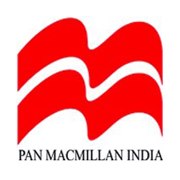 Pan Macmillan India announces the appointment of Prasun Chatterjee as Editorial Director
Pan Macmillan India announces the appointment of Prasun Chatterjee as Editorial Director

